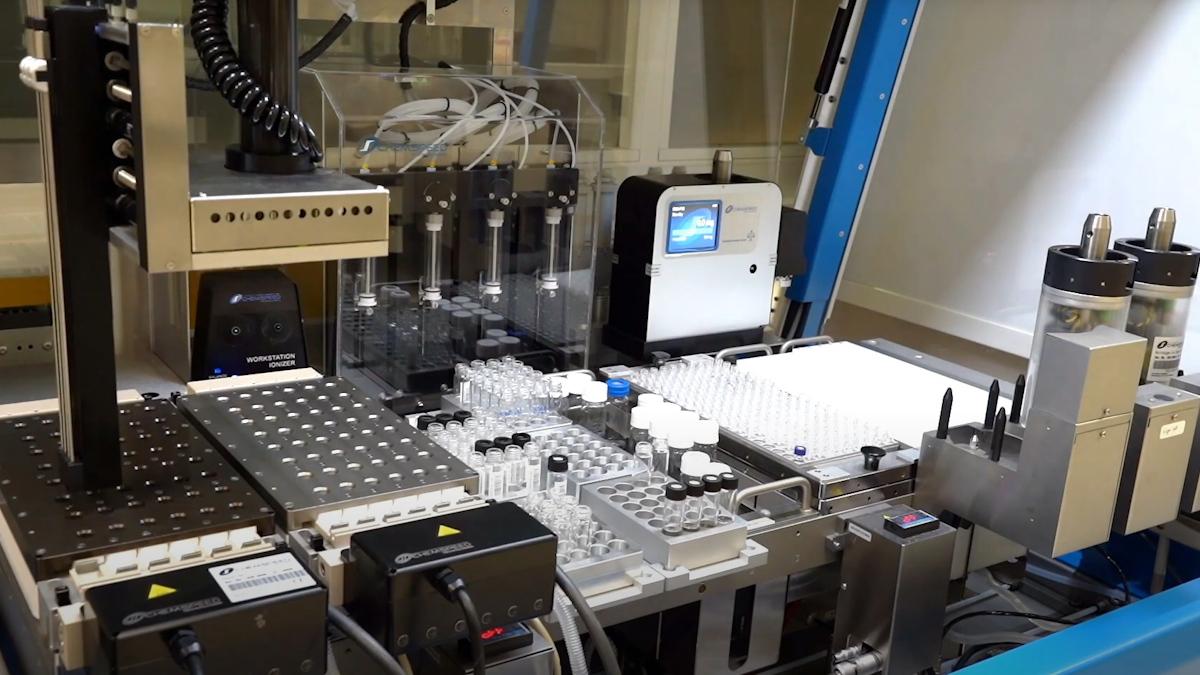DCTs: Building trust with collaboration and technology

Decentralised clinical trials (DCTs) were pushed forward substantially by COVID-19 lockdowns. Over the past year, as societies have reopened, processes for traditional in-person clinical trial activities have gradually been re-established. It is therefore cautiously that we question whether DCTs in 2023 will experience continued growth or return to pre-pandemic constraints.
There are certainly challenges associated with designing decentralised clinical trial protocols that enable a larger percentage of visits to occur outside clinic walls. Among them, decentralised visits often entail the use of newer digital capabilities for data collection, such as wearable devices/sensors. Thus, there is a need to safeguard the quality and reliability of the data generated by these devices.
Additionally, using alternative site models such as retail pharmacies, virtual sites, and mobile sites can further help in decentralising clinical trial visits and increase patients’ access to clinical trials. However, continuing to build patient trust in clinical trials remains a critical aspect to focus on when thinking of clinical trial modernisation. It is incorrect to assume that DCTs alone will rebuild patient trust.
Still, one thing is sure: DCTs should no longer be viewed merely as a “last resort” study methodology. By and large, sponsors and other stakeholders now recognise the intrinsic benefits of DCTs in improving access to clinical trials and enhancing flexibility for patients. This recognition is fostering new opportunities for partnerships among the pharmaceutical, digital, and healthcare industries to continue growing the value of DCTs in the pharmaceutical research industry.
Bolster data quality
To further establish a higher level of decentralisation in clinical trials, sponsors may require the use of wearable devices and sensors to enable data collection from patients remotely. Data collected from such devices is not conventional and ensuring regulators accept that data will be critical for the success of DCT implementation long term. Can sponsors show that the data collected remotely from a wearable device is scientifically sound? While many devices adequately collect objective measures (e.g., activity trackers or remote electrocardiograms), regulatory agencies must verify that:
- the devices are validated and equivalent to in-clinic equipment
- the data from the devices aligns with data collected from in-clinic equipment so it can be accurately analysed and assessed.
At a high level, these are problems of validation and orchestration. To address them, sponsors should consider early collaborations with both technology companies and regulators. Ideally, proactive relationships with the former should enrich conversations with the latter.
That is because robust pharmaceutical/technology partnerships interweave drug development experience with device and data collection expertise. Not only does such teamwork go a long way toward accelerating clinical trials, but it may also give regulators more confidence in the quality of the data produced by the devices used.
Likewise, sponsors that take advantage of opportunities to consult with regulators early in the drug development journey can better understand how to pilot devices for novel ways to measure endpoints. Opportunities may exist for sponsors to determine whether data from specific devices can be leveraged “as-is” for submissions, and to understand what the data must prove before it can be used.
Although regulators’ primary concerns about drug safety and efficacy remain unchanged, the pandemic added critical nuances to regulators’ checklists. For example, given today’s increased focus on diversity and equity in clinical trials, regulators may encourage sponsors to leverage DCT methodologies as appropriate, so that studies are not overly dependent on in-person visits.
That said, sponsors will succeed more often if they design their clinical trial protocols with decentralisation in mind from the beginning, rather than trying to “retro-fit” a traditional trial protocol into a decentralised approach. While the DCT approach intensifies pressure on stakeholders to leverage electronic source data, collaborative work groups and consortia in the industry are examining how to do so effectively.
Strengthen patient trust
Developing productive relationships among sponsor companies, technology companies, and regulatory agencies takes time and effort. However, the issue of patient trust in the healthcare and clinical trial ecosystem is an even more complex challenge to navigate.
The pandemic plainly illuminated how much “trust” influences patients’ healthcare decisions. It also revealed that trust comprises many evolving and multi-faceted dimensions. Clearly, underlying trust issues cannot be fixed just by leveraging DCTs alone. However, modernising clinical trial processes can play a role. The proper use of DCT technology can help earn patients’ trust in a few key ways:
- Increased access to novel therapies. DCTs can extend the reach of novel therapies by reducing the need for patients to be in close physical proximity to a study site. However, DCT technology will never replace physical sites of service—nor should it. After all, the patient/provider relationship forms the foundation for patients’ confidence in clinical trial processes. DCTs simply give patients more options and potentially expand access to trials, guided by the providers they trust.
- Improved patient experience. Antiquated technologies rarely enhance trust in a process, especially among younger patient populations accustomed to digital consumer environments. It’s not surprising that patients continue to expect healthcare—including clinical trials—to offer the same modern and convenient digital interactions they receive elsewhere. Increasingly, patients also expect greater ownership of their healthcare data, which is possible, albeit technically tricky. Resources, such as the Participant Data Return Resource Pack, can help industry stakeholders return individual data globally and may place stakeholders in a position to enhance patient trust.
- More transparency and better education. People tend to be less engaged in experiences that they don’t fully understand. Digital technology used in DCTs can enhance engagement and education for patients through more consumer-friendly interactive tools, multimedia approaches, and other modern communication methods to fully inform patients of the clinical trial protocol into which they are enrolling. Additionally, the continued engagement over digital technology allows patients to review and revisit critical trial information online to better understand their patient journey in a clinical trial. By making information more convenient, transparent, and easily remembered, tools like these may make patients more confident in their healthcare decisions, including their choices about clinical trials.
Carry the collaborative spirit forward
Modernising the clinical trial experience depends on myriad factors, both inside and outside of healthcare. The challenges of clinical research cannot be minimised—but that is precisely why collaboration among industry stakeholders is essential.
As 2023 unfolds, it might be tempting to revert to traditional study processes to get around the obstacles posed by DCTs. A better option is to face them head-on together in the industry, with sponsors, technology providers, CROs, and regulators collectively providing more options for patients. It’s time to carry forward the valuable lessons of resilience and collaboration learned over the past few years, catalysed by the COVID-19 pandemic. True DCT partnerships can help the entire industry grow, modernise, and secure the trust of regulators, patients, and the public.
About the author
 Hassan Kadhim is the global head of clinical trial business capabilities & clinical innovation at Bristol Myers Squibb (BMS). In his current role, Kadhim’s team governs the business technology capabilities strategy within global development operations and drives change and innovation toward better outcomes for clinical trial stakeholders. Kadhim’s group at BMS spans the entire clinical trial journey from patient engagement and awareness, site engagement, to data collection capabilities, and decentralized clinical trials. He is an active contributor to TransCelerate and the Clinical Trials Transformation Initiative (CTTI).
Hassan Kadhim is the global head of clinical trial business capabilities & clinical innovation at Bristol Myers Squibb (BMS). In his current role, Kadhim’s team governs the business technology capabilities strategy within global development operations and drives change and innovation toward better outcomes for clinical trial stakeholders. Kadhim’s group at BMS spans the entire clinical trial journey from patient engagement and awareness, site engagement, to data collection capabilities, and decentralized clinical trials. He is an active contributor to TransCelerate and the Clinical Trials Transformation Initiative (CTTI).











